We heard about this place in Bucks County, Pennsylvania for years and we finally made it up there. It is this place where there is a field of rocks that ring musically when they are lightly struck with a hammer. We heard that there is a lot of Wild Ginger (Asarum canadense) Â growing in this County park.
Dont forget your hammer! – Our recollection of the guidebook we forgot suggested.
In a flurry of backpacks, maps, batteries, weather forecasts, traffic reports, lunch preparations, digital devices, shoe choices and hat combinations, we forgot the hammer.
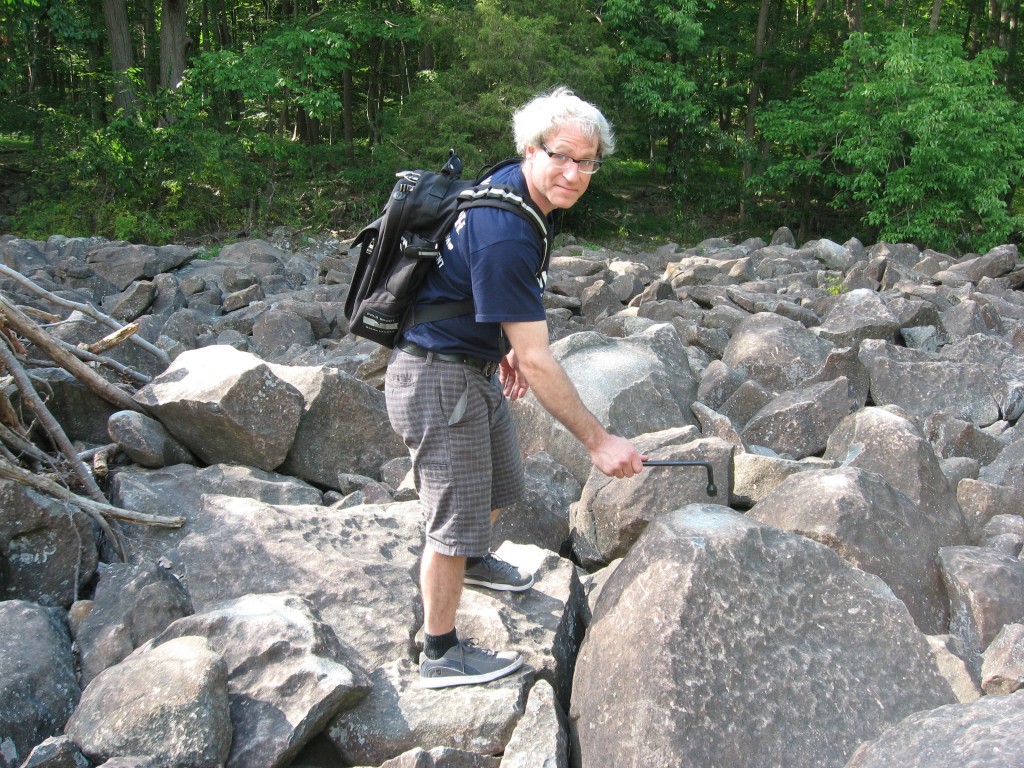
The tire iron found in the spare tire compartment turned out to be the thing-a-ma-bob that did the job! Â We tapped on a multitude of different rocks in this 4 acre boulder field and heard lots of different musical tones. Â Many of these rocks have been tapped on for years and all the right spots were long ago discovered, so much so that the best rocks had depressions in them where they had been hit so many times at the best spots. Â This made for a self-guided tapping tour of the Ringing Rocks Park boulder field pictured above.
The rocks made for great entertainment, and hearing them ring so musically was enchanting.
It all started about 200Â million years ago, in a time named the Early Jurassic Period. Liquified rock from the upper mantle of the earth called Diabase forced its way into the solidified part of the earth called the crust, and broke into a space between the hardened sedimentary Shale rock layers filling up a huge area spanning from what is now Pennsylvania into New Jersey. Â This horizontal layer of the igneous rock, Diabase is called a Sill. The sill was created when the diabase in magma form was able to break through to the higher layers of sedimentary rock because the continental mass was stretching apart, creating cracks in the upper surface of the earth. The magma was under intense pressure from the weight of rock above it and was squeezed through the cracks into a narrow space between the sedimentary layers. Â Once the magma settled into its spot, it began to cool.
During the process of cooling, minerals began to form as elements that were attracted to each other were able to connect within the superheated amorphous mass. The longer it takes to cool, the more complex and interesting developments of mineral combinations can be found. In the case of our diabase sill, The minerals Olivine and Pyroxene formed into crystals, which were denser and heavier than the liquid, and they settled to the bottom of the cooling sill, in a layer about 10 feet thick. Â Eventually the whole sill cooled into a hard rock, and this rock can be found today, in outcrops across portions of Eastern Pennsylvania and New Jersey. Â The bottom of the sill, the ten foot thick layer containing the Olivine and Pyroxene crystals is the one that created the boulder fields of ringing rocks.
However, there are only a handful of boulder fields of ringing rocks  that exist, because to get to such a state that not only is there a boulder field, but to have that boulder field have ringing boulders requires very specific conditions. The ‘live’ rocks that actually ring are the product of a very specific series of events and conditions.
While very little is known beyond conjecture of what exactly makes them ring in the way they do, it has been established that specific geological conditions predate the boulder fields:  The diabase sill was close to a mile below the surface of the earth and had undergone severe compression from the weight of the rock above it, creating internal stresses.  There was the uplifting of the diabase sill from the erosion of rock overhead over the past 200 million years.  There was an ice age with massive glaciers which never reached the Diabase sill, but created the conditions of  periglacial freezing and thawing of ice around the sill, enough to break it apart into boulders. And lastly, the newly broken up boulder field must be on a slope of less than 25 degrees dip, but not flat either, somewhere around 15 degrees slope.  If the slope is too steep the rocks will roll away from the force of gravity.  If the slope is too gradual, sand and silt will accumulate into soil instead of washing away, and the boulder field will disappear under the roots of a forest.
Once the boulders are surrounded by the trees, associated plant life, soil and the resulting moisture retained , they lose their ringing ability and go from ‘live’ to ‘dead’. Â This is because the weathering moisture penetrates into the rock and loosens up its inner tension. As long as the boulder field has no soil or trees or continual moisture around it, it will continue to ring.
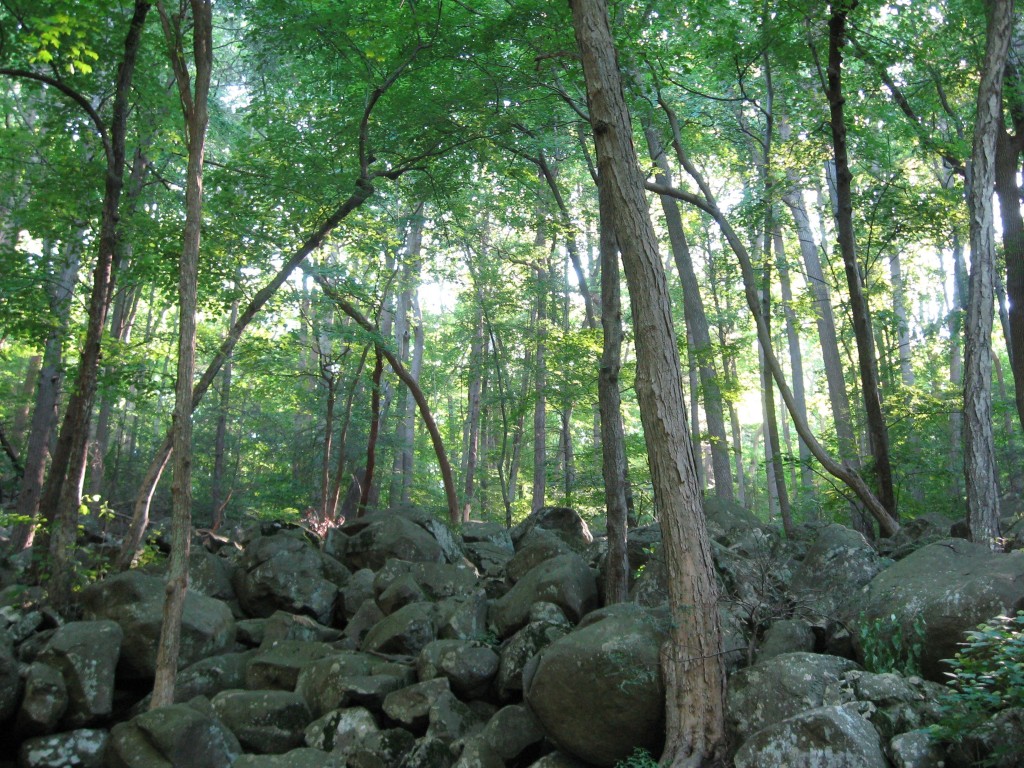
Here the slope was too steep for the boulder field and the rocks had rolled away. They ended up in this place that collected soil and now trees grow amidst the ‘dead’ boulders.
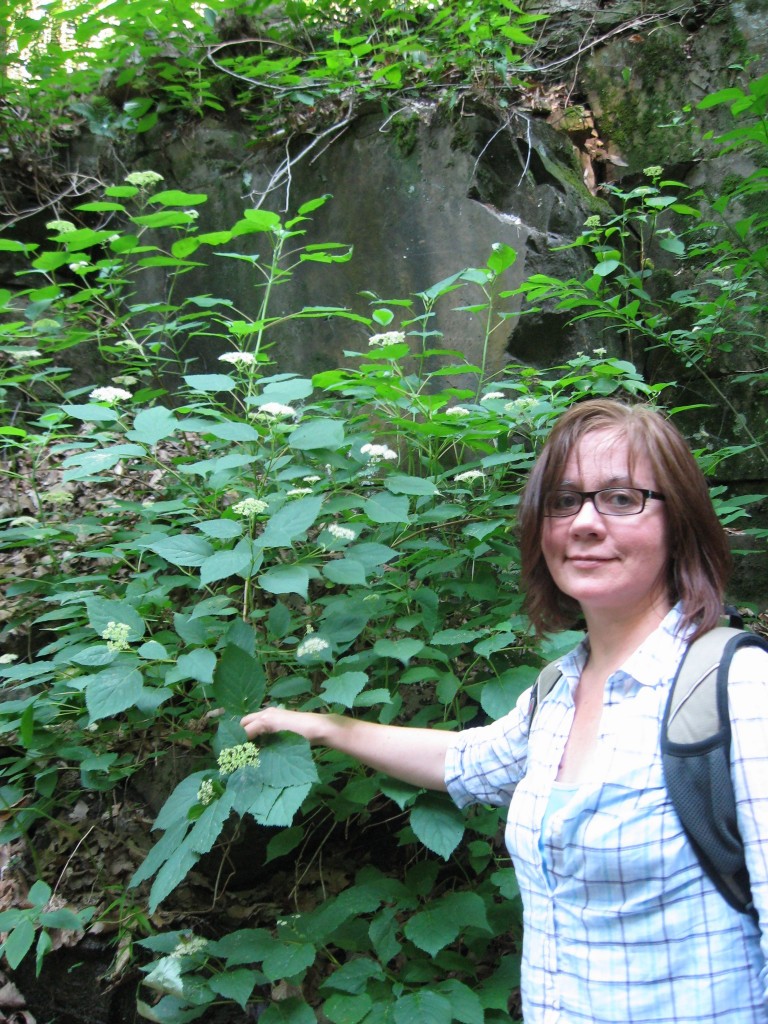
Onto other things, Isabelle was delighted to discover the native shrub Hydrangea arborescens, the straight species, just growing along the waterfalls in the Ringing Rocks Park. We have this plant in our garden, and it has been all the buzz. Â The bees and a a multitude of interesting insects have been feasting on our native Hydrangea. Â We feel like our shrub is supporting an ecosystem.
It is one of our favorite things to find one of our native plants we bought at a nursery just growing in the wild! Every time we find one, it is a memorable and fantastic discovery. It also helps us understand where to place our native plants if they are not doing well.
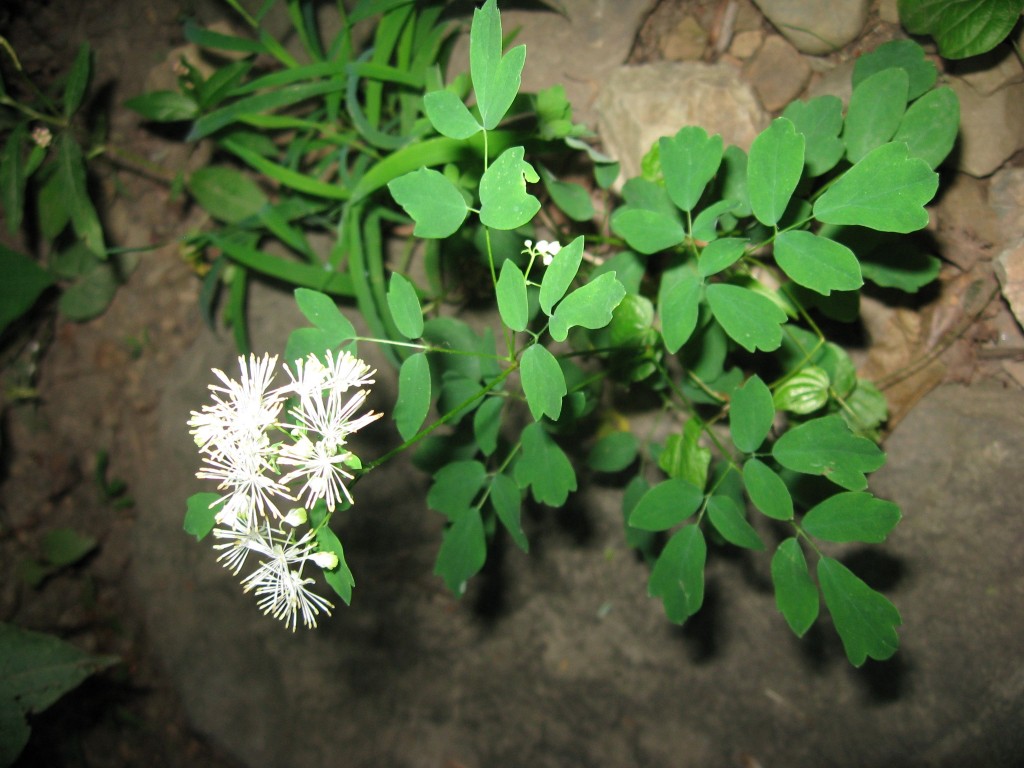
We were unable to identify this plant. We guess it is a Rue something or another.
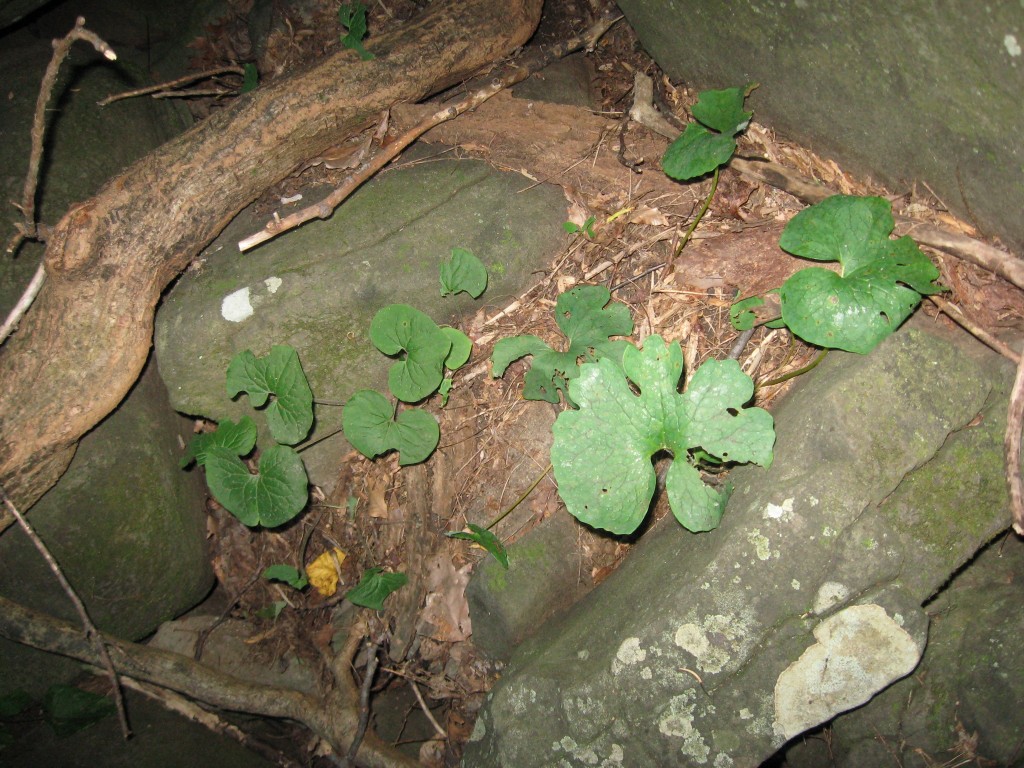
Bloodroot (Sanguinaria canadensis) and Ginger (Asarum canadense) growing together on the moist rocky slope.
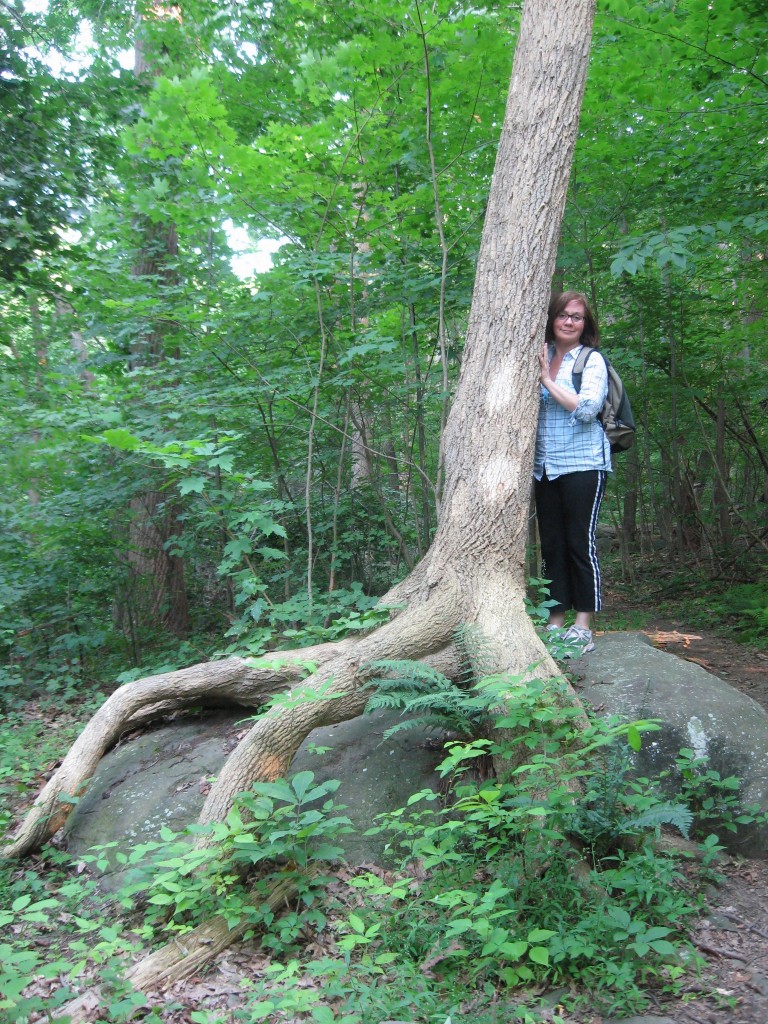
This ash tree was growing right over one of the boulders.
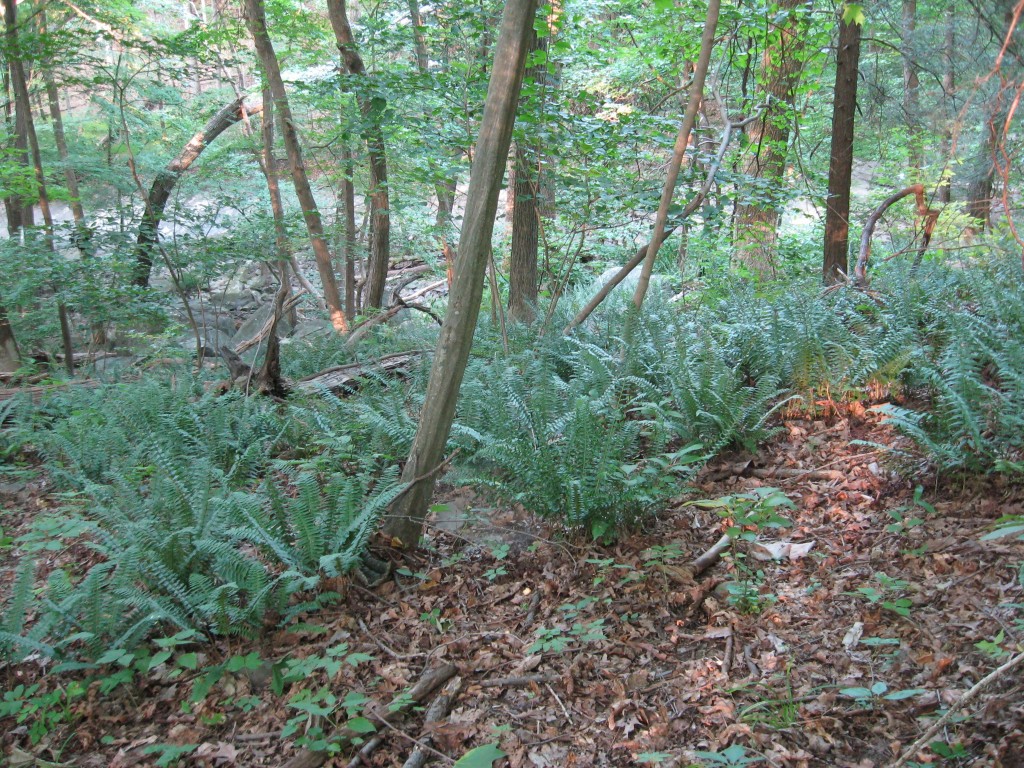
These christmas ferns (polystichum acrostichoides)give us some garden ideas and also remind us of the legacy of plant life on earth.
This is a great place to interact with  an interesting geological feature, giving us the opportunity to meditate upon the mind- bending age of the earth. All of us, including the plants are created from these rocks. The longer it takes for liquid magma to cool, the more complicated the interactions of the elements can be, creating a diverse array of minerals, many of which form the building blocks of life forms.
Likewise, the incredible age of these rocks, many of them having been created and broken down many times only to begin breaking down again before our eyes, has created a condition suitable for complex life forms to evolve. Now, life has created a chemistry of its own, further interacting with the geological layers, and even forming new geologic layers, such as coal. Â In Pennsylvania, there are layers of shale rock that can be broken open with a hammer to reveal fern fossils, resembling the Christmas fern pictured above, as long as one can remember to bring the hammer!
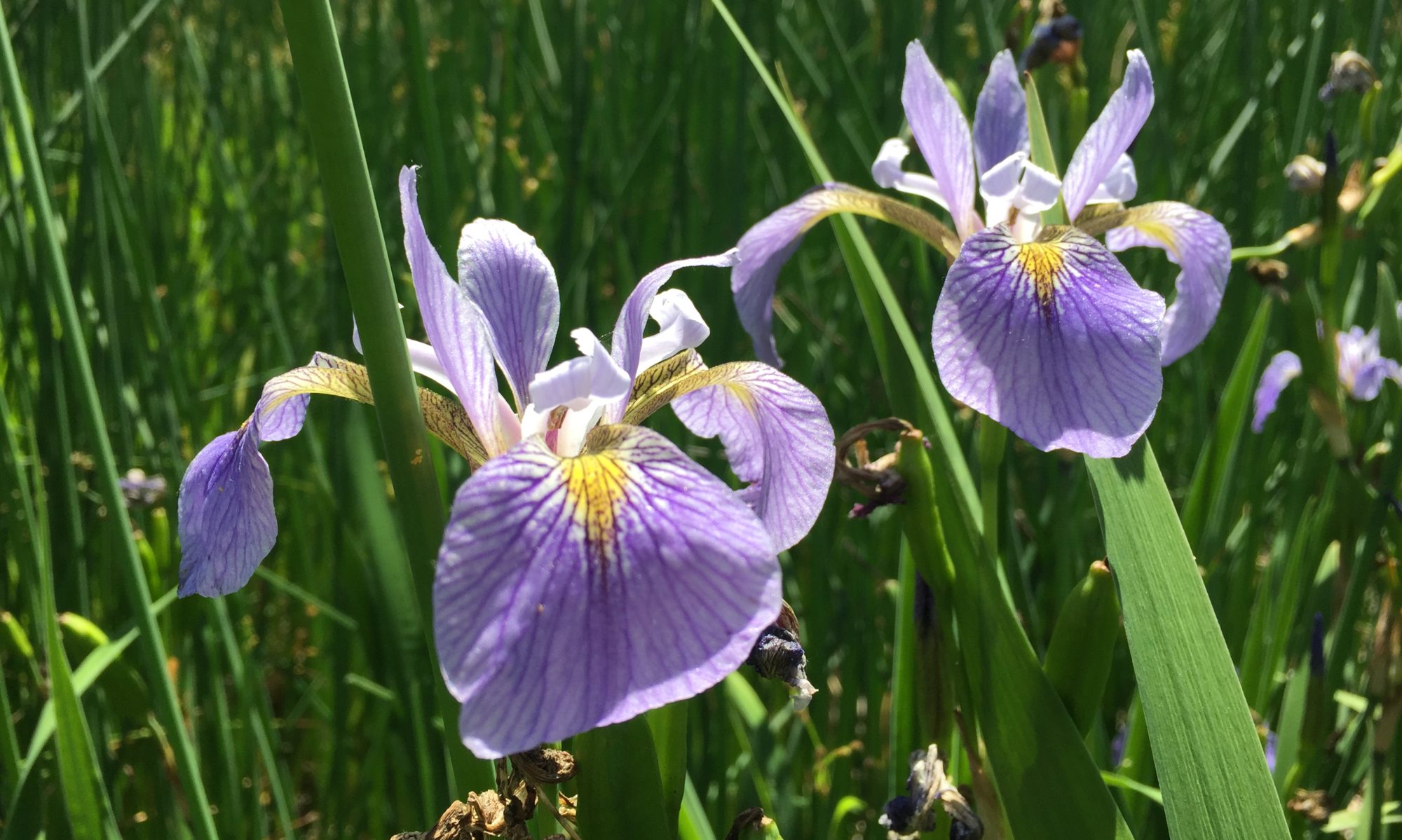
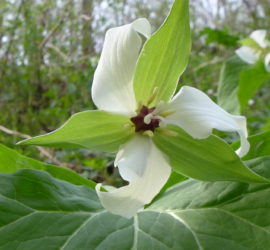

I have seen other plants with that leaf shape – similar to the unknown plant you believe is a variety of Rue. Once I think of where I have seen it, may be able to offer a suggestion.
Also please note, your comments would not accept maureen@goodread.com
Thanks for the heads up on the ease of commenting. Commenting should be easy, let me know of any other problems. Still havent figured out what the plant is.
Ah Sean & Isabelle:
Our intrepid explorers! Now, if we had a little coordinated group with the proper hammers, we might be able to 1) discover the origins of music, 2) create a native gamelan orchestra as those in Bali, java, etc. A few crows above could contribute choruses. Is is hollows inside the “tensions” that resonate? I wonder if you’ve ever been to Pyramid Lake in Nevada… volcanic somethings that must have happened violently and practically in one day and night, have left huge round balls of rock with hollowed out insides, masses of them. I didn’t think to ping them with a hammer, too awed (peyote) at just seeing them (they’re quite big and round, like rock bubbles really, with inch or so of crust and then empty hollows inside… amazing!), but we spent a day and night climbing among them, in a very lovely primitive state (both ours and Nevada…).
Abdal Hayy, the place you describe sounds really interesting!
This sounds like such an interesting place! Great story.
Mike, it was quite an adventure, thanks!